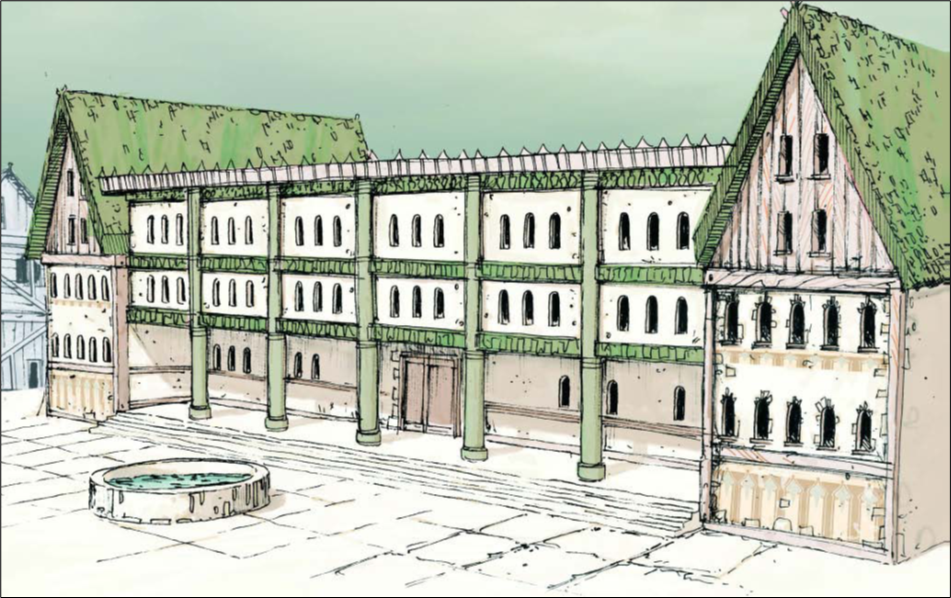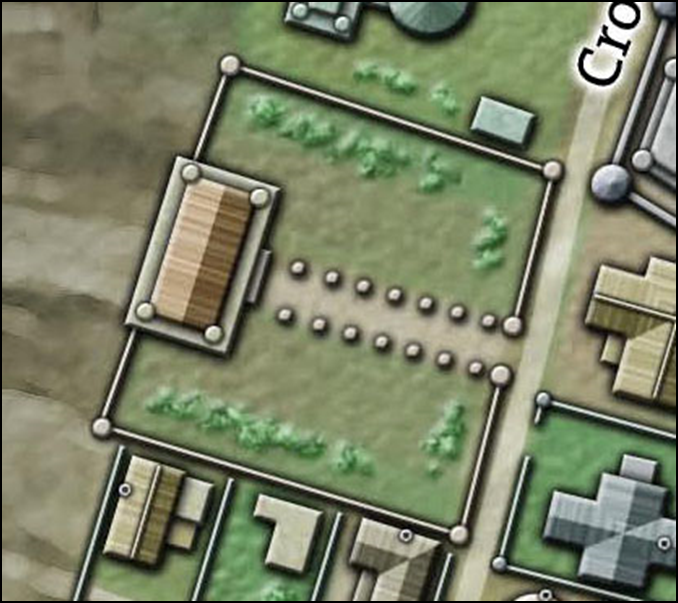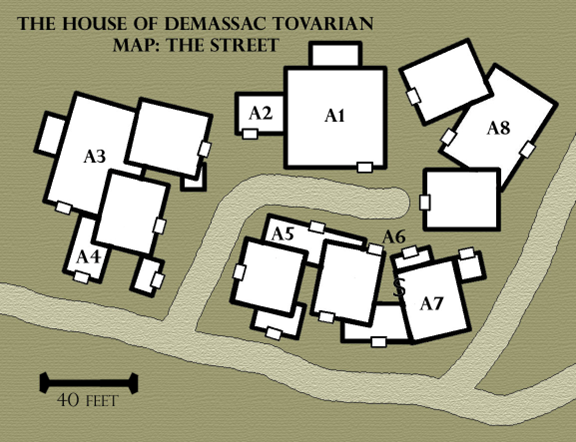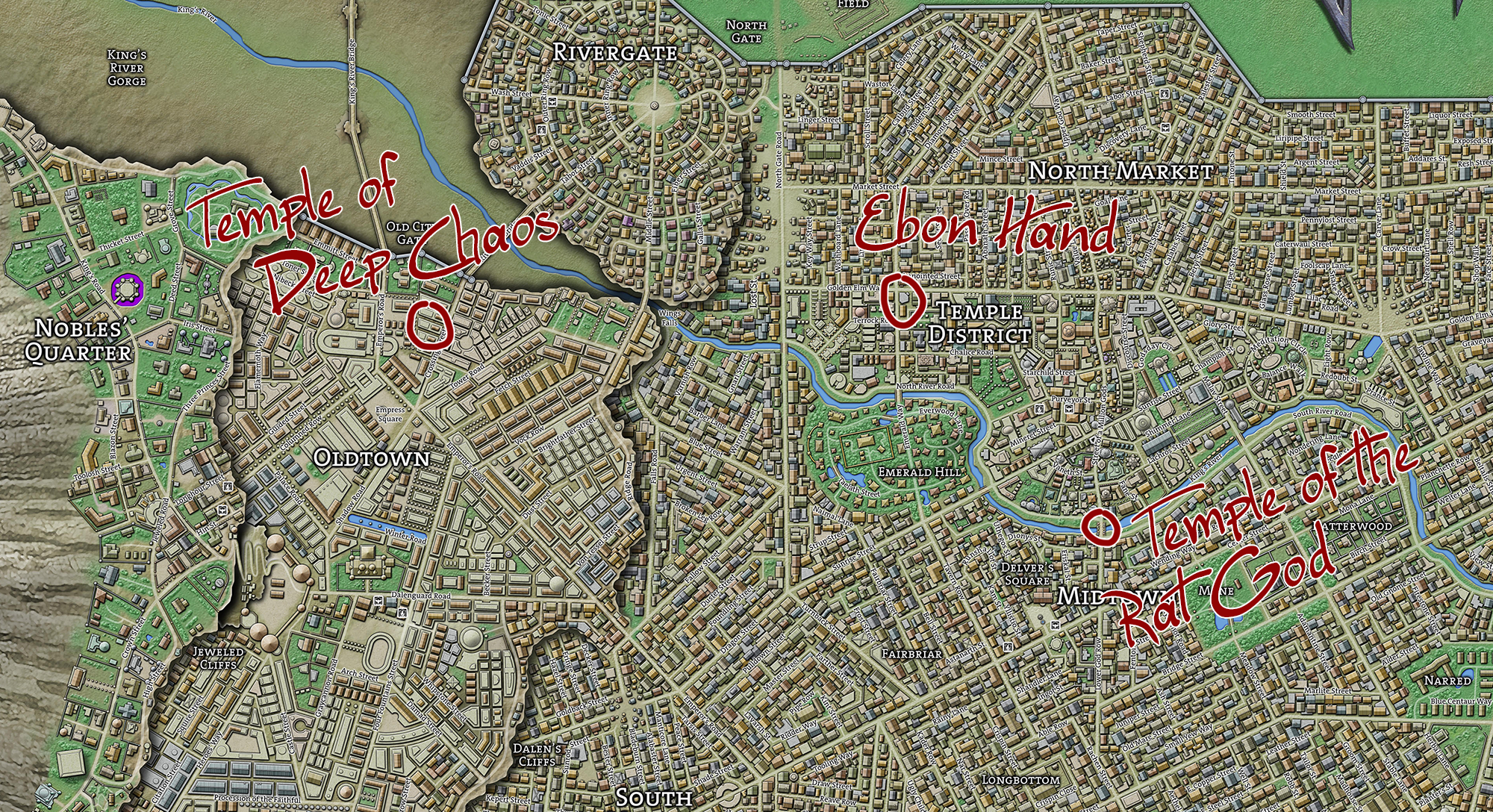DISCUSSING
In the Shadow of the Spire – Session 37B: An Uneasy City
At the gates of the Necropolis, Tee stopped and spoke with the Keepers of the Veil. She inquired after records of those buried in the Necropolis, hoping that they might indicate the location of Alchestrin’s ancient tomb. The knights didn’t keep records of that sort, but they suggested that one might inquire at the Administration Building in Oldtown.
At the end of Session 36, the PCs realized that what they thought was Alchestrin’s Tomb was actually a false tomb that had been constructed from scavenged sarsen stones that bore Alchestrin’s sigil.
This left them stymied. (Which was surprising to me: I once again thought it would be obvious that the stones must have been scavenged from somewhere nearby – particularly since they had been told Alchestrin’s Tomb was in this area – and therefore all they needed to do was look around the area a little more to locate the actual tomb. But they didn’t think to do that.)
They did, as you can see here, have the idea of asking the Keepers of the Veil – an order of knights who guard the borders of the Necropolis – to see if they would have a record of the tomb.
That makes logical sense, but in this case I knew from my notes that the Keepers didn’t have those records. (I did make a Knowledge check to see if one of the knights they spoke with would just coincidentally know the location of Alchestrin’s Tomb due to their experience with the Necropolis, but they failed the check.)
So at this point we have a fairly straightforward execution of the Spectrum of GM Fiat: I could just say, “No, the Keepers don’t have those records.” But you generally want to avoid simply saying “No” if at at all possible, which means that this is a perfect opportunity for a No, but…
In fact, it’s the perfect opportunity for a diegetic No, but… I know the Keepers don’t have those records, but that such records can be found in the Administration Building. I could just tell the players that (e.g., “Elestra, you’d know that such records would typically be kept in the Administration Building”), but in this case there’s no reason that the Keepers can’t know that. (It actually makes perfect sense: Although they don’t keep these records, it’s easy to imagine why those keeping watch over the undead and other dangers of the Necropolis would need to access them and, therefore, know where to find them.) So I can simply put the No, but… into the mouths of the Keeeprs and make it a natural part of the game world and the flow of play.
Ranthir spent the morning hours at the Administration Building, seeking records of Alchestrin’s Tomb.
Unfortunately, most of that time was wasted as Ranthir was shuffled fruitlessly from one ministry to another. He eventually found his way to the Ministry of Public Works and a relatively friendly older woman who showed him to what she thought “might be the proper room”. It was stacked high with moldering stacks of yellowing, unorganized parchment. In some ways, it was Ranthir’s perfect heaven… but it still left him stymied in his search for the Tomb.
Shortly thereafter, Tee caught up with him, assessed the situation, and made a quick circuit. Leaving a few greased palms in her wake, Tee was able to secure him assistance in sorting through the papers. This sped his task somewhat, but despite the help he was no closer to finding the Tomb by the time he had to leave.
When Ranthir actually goes to the Administration Building later in the session and tries to look up the records, however, I swapped off the Spectrum of GM Fiat and turned things over to the good ol’ fictional cleromancy of the mechanics…
… and Ranthir promptly failed his skill check.
(Tee showed up later and tried to help, but after some more bad rolling, it was still a failure.)
So here we go from No, but… to No.
Of course, some might ask why I had Ranthir roll for this vital information in the first place! If you roll for getting clues like this, then you risk the roll being a failure and the PCs not getting the clue! And, in fact, this horrible disaster is exactly what has happened!
I certainly could have stayed on the Spectrum of GM Fiat and ruled that Ranthir, having gotten to the right place, would automatically find the information he was looking for. But in this case, it’s not what my notes said, so that outcome really would have been a fudge. (Don’t fudge!) More importantly, though, I don’t actually care that Ranthir missed this check. It’s not my problem. It’s the players’ problem!
Because I know that:
- the PCs don’t actually NEED to get into Alchestrin’s Tomb in order to continue making progress in the Banewarrens (so it’s not a load-bearing aspect of the scenario);
- there’s other ways for them to find Alchestrin’s Tomb (remember the Three Clue Rule); and
- there’s lots of other leads the PCs can pursue (so the campaign isn’t going to stall here).
And so this is yet another situation where I can just be okay with failure being meaningful and seeing where it will take the campaign.
Campaign Journal: Session 37C – Running the Campaign: Patron Exhaustion
In the Shadow of the Spire: Index





















